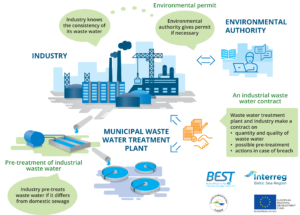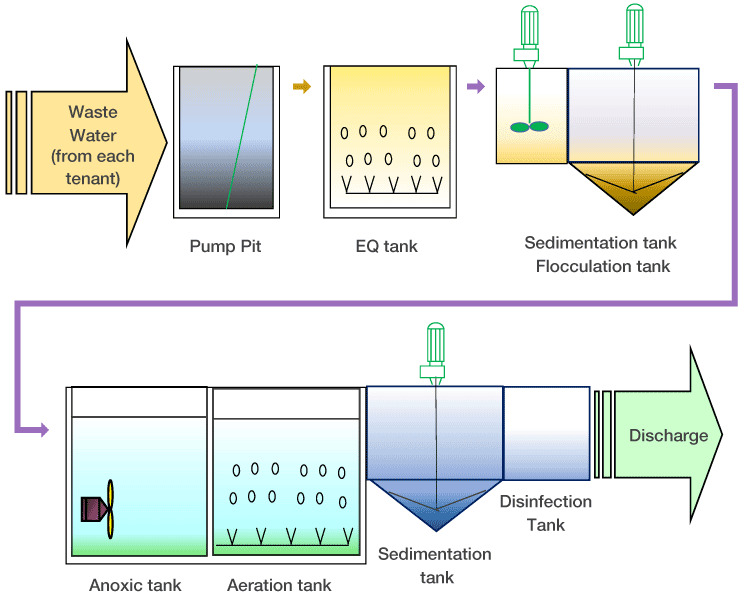Industrial Waste Water Treatment-- Reliable Waste Management for Factories
Industrial Waste Water Treatment-- Reliable Waste Management for Factories
Blog Article
Advancements and Breakthroughs in Hazardous Waste Water Therapy Technologies
The landscape of industrial wastewater treatment is undergoing a transformative shift, driven by developments that improve both effectiveness and sustainability. As regulative requirements progress, the combination of AI and maker discovering into wastewater administration systems assures to make certain and simplify procedures compliance.
Summary of Waste Water Therapy Technologies
Wastewater therapy modern technologies incorporate a variety of techniques developed to remove impurities from commercial effluents before their release right into the atmosphere. These technologies are crucial for maintaining eco-friendly equilibrium and guaranteeing compliance with ecological guidelines. The primary groups of wastewater therapy include physical, chemical, and biological techniques, each offering distinct purposes based upon the nature of the contaminants existing.

Biological treatment techniques use microorganisms to deteriorate raw material, making them specifically effective for organic-rich effluents. Techniques like activated sludge and biofilm reactors harness the natural deterioration abilities of microorganisms, bring about significant reductions in biochemical oxygen demand (BOD)
Advanced Filtration Techniques
Advanced filtration techniques represent a crucial development in the world of industrial wastewater treatment, improving the effectiveness of pollutant removal processes. Industrial Waste Water Treatment. These methods encompass a range of innovations, consisting of microfiltration, ultrafiltration, nanofiltration, and turn around osmosis, which supply sequential barriers for various particle dimensions and chemical frameworks
Microfiltration and ultrafiltration utilize membrane layer systems to get rid of put on hold solids, germs, and larger organic particles, boosting the top quality of effluent previous to additional treatment. Nanofiltration bridges the void in between ultrafiltration and reverse osmosis, efficiently getting rid of natural substances and divalent ions, hence minimizing the load on downstream procedures.
Reverse osmosis uses the highest possible level of filtration by enabling only water and little molecules to pass through its semi-permeable membrane layers, making it excellent for redeeming top notch water from industrial effluents. Recent innovations in membrane technology, consisting of the advancement of even more resilient and fouling-resistant products, have significantly boosted operational performance and decreased costs.
Integrating these advanced purification techniques not just enhances the total treatment process yet likewise contributes to sustainability initiatives by enabling water reuse and source recovery in industrial setups. (Industrial Waste Water Treatment)
Organic Therapy Advancements

Moreover, the advancement of crafted biological systems, such as membrane bioreactors (MBRs), incorporates biological therapy with sophisticated membrane layer filtering. This combination permits greater effluent quality and lowered footprint, making it ideal for space-constrained commercial centers. Advancements in genetically engineered bacteria have actually likewise arised, boosting the biodegradation of certain contaminants, such as pharmaceuticals and hefty metals, that are commonly challenging to get rid of.
Additionally, the application of bioaugmentation strategies, where helpful microbes are introduced to boost the existing biological therapy procedures, has revealed promising results in boosting treatment performance. These advancements jointly represent a fad towards more lasting and efficient organic therapy approaches that can adjust to the advancing complexities of industrial wastewater streams. As markets proceed to focus on environmental conformity, these organic innovations will play an important duty in wastewater management.

Resource Recuperation Techniques
In commercial setups, the combination of resource recuperation methods has come to be increasingly essential for improving sustainability and decreasing waste. These resource techniques concentrate on drawing out valuable materials and energy from wastewater streams, consequently transforming prospective pollutants into multiple-use resources.
One noticeable approach is vitamins and mineral recovery, where nitrogen and phosphorus, commonly present in excess in wastewater, are recorded and converted right into fertilizers. This not only minimizes environmental effects yet also offers a round economy remedy for agricultural applications. Furthermore, modern technologies such as anaerobic food digestion allow for the conversion of natural waste into biogas, an eco-friendly power source that can balance out nonrenewable fuel source usage in industrial operations.
Additionally, progressed purification and membrane technologies assist in the recuperation of industrial spin-offs such as salts and steels. These recovered materials can be reintegrated into production processes, minimizing the demand for virgin sources.
Future Fads in Drainage Management
As industries increasingly prioritize sustainability, the future of wastewater administration is readied to go through considerable transformations. Technical advancements, such as expert system and artificial intelligence, will enable much more efficient monitoring and monitoring of wastewater systems. These modern technologies can forecast upkeep requirements, enhance treatment processes, and enhance decision-making, inevitably lowering functional expenses and environmental impact.
Moreover, the integration of round economy concepts will certainly play a crucial duty in wastewater management. Industries are expected to change towards systems that not only treat wastewater yet additionally recuperate useful sources, such as nutrients, water, and energy. This shift will lessen waste and promote the reuse of materials, straightening with global sustainability goals.
Arising therapy methods, such as membrane bioreactors and advanced oxidation processes, will certainly further improve the performance of wastewater treatment, enabling greater high quality effluents ideal for reuse. In addition, regulative frameworks are most likely to develop, stressing stricter standards for wastewater discharge and motivating industries to take on cutting-edge More Help treatment remedies.
Final Thought
In conclusion, the development of industrial wastewater therapy technologies shows a significant change in the direction of improved performance and sustainability. Advancements in advanced filtering strategies, biological therapies, and source recovery approaches highlight the industry's commitment to ecological stewardship. The integration of fabricated visit homepage intelligence and artificial intelligence even more maximizes these processes, making sure regulative conformity and promoting a circular economic climate. Proceeded advancements in these areas will certainly play a crucial function fit the future of wastewater monitoring and protecting important water sources.
The landscape of industrial wastewater treatment is undergoing a transformative shift, driven by developments that improve both effectiveness and sustainability.Wastewater treatment innovations include a variety of techniques developed to get rid of contaminants from commercial effluents prior to their launch right into the atmosphere.Taking advantage of the power of organic processes has led to significant developments in the treatment of commercial wastewater.In addition, the execution of bioaugmentation methods, where helpful microorganisms are presented to boost the existing organic treatment processes, has actually revealed appealing results in improving therapy efficiency. These developments collectively indicate a fad towards more reliable and lasting biological therapy methods that can adapt to the evolving intricacies of commercial wastewater streams.
Report this page